How to get rid of weeds and stop them from spreading: top tips for a neater garden
Want to know how to get rid of weeds? We've got all the advice you need, from saltwater to vinegar methods plus more
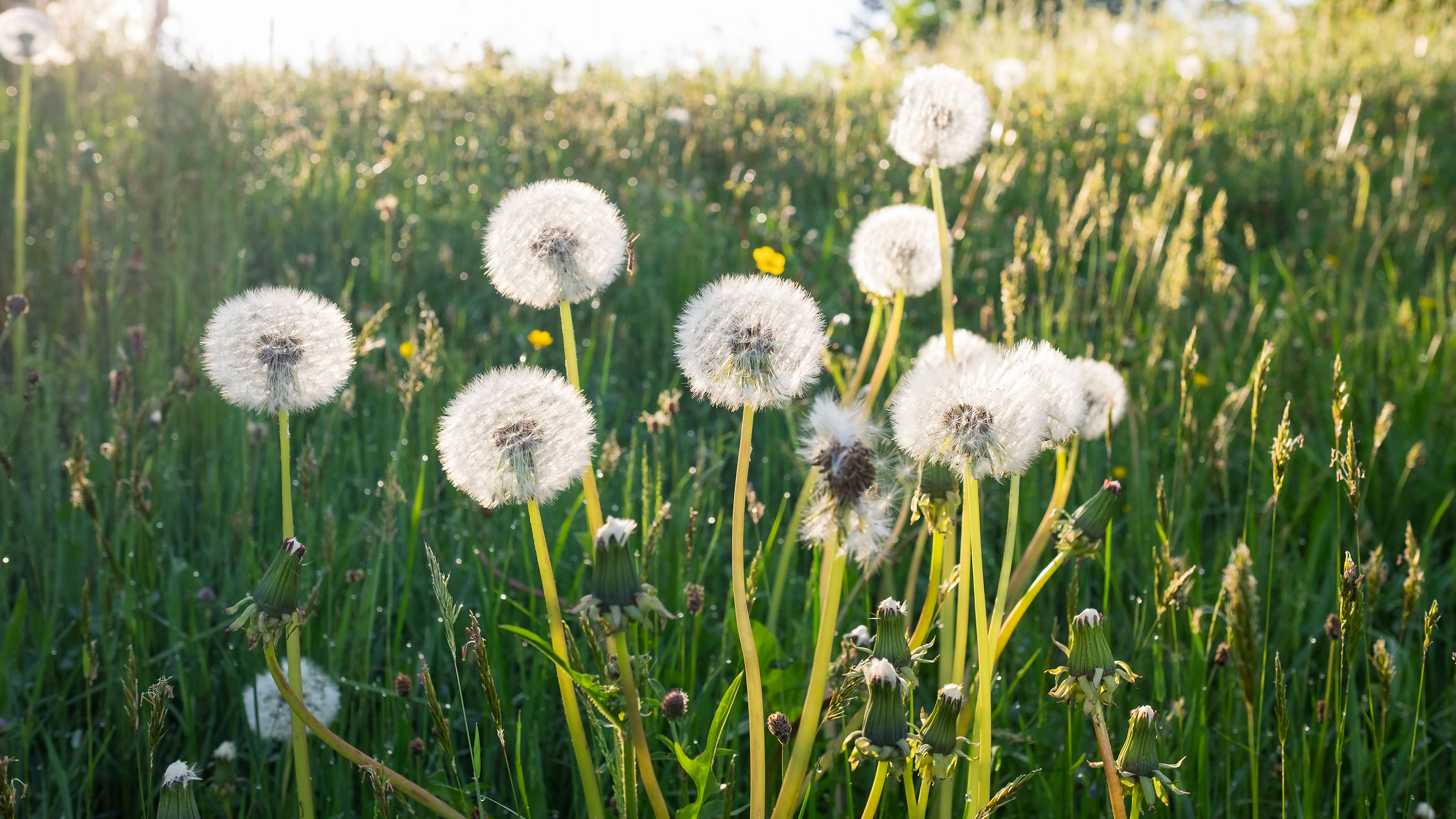
Flower beds full of dandelions? Paths covered in chickweed? Our tips on how to get rid of weeds and stop them from spreading will come in handy if these pesky intruders are driving you around the bend.
There is all manner of weeds lurking in our gardens and sowing seed wherever they get the chance. The general consensus is that they're a pain – especially when they're encroaching on our prized flowers or vegetables and sapping the nutrients from the soil. In the case of some (Japanese knotweed, poison ivy, stinging nettles – we're looking at you) they can also do more harm than simply spoiling the look of a border. Everyone knows about the nasty allergic reactions that occur from a run-in with nettles or poison ivy, whilst knotweed can tear through structural foundations at breakneck speed. Naturally, none are ideal.
Luckily, there are a good few methods to zap these plants from our plots and restore order. And, many approaches don't require reaching for the bottle of chemicals, either.
12 easy tips for how to get rid of weeds
We've rounded up lots of tips on how to get rid of weeds and stop them from spreading below. Your plot will be free of them before you know it.
1. Dig them up by the roots
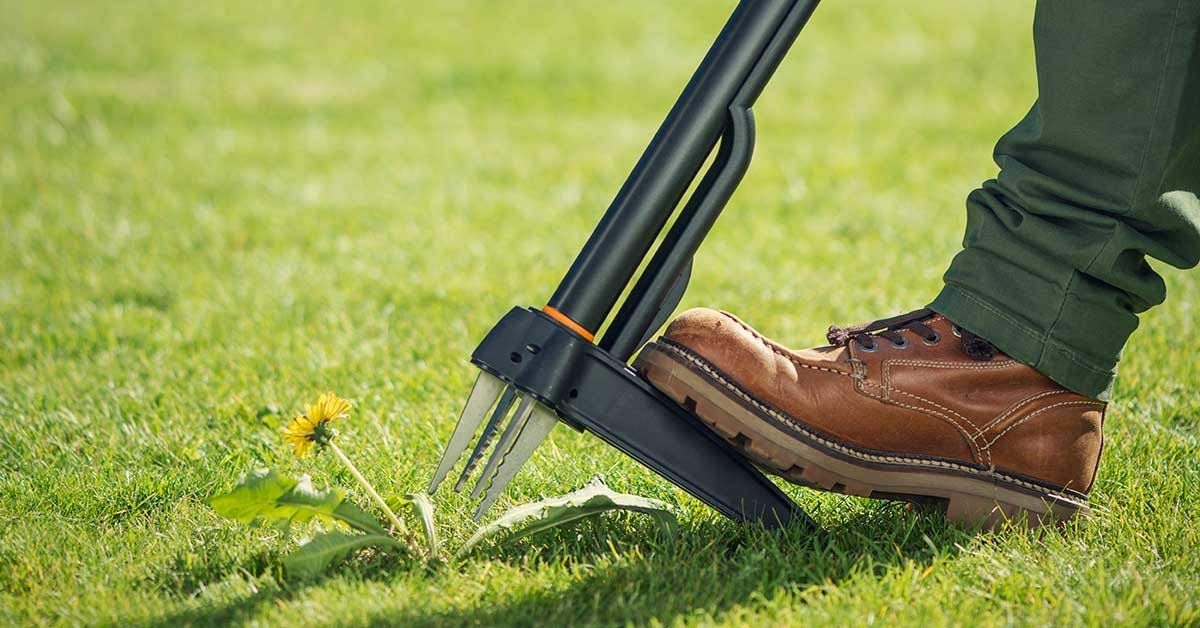
True, it's a little old-fashioned, but it's certainly stood the test of time. Digging up weeds is one of those trusty, all-natural methods that, when done properly, works wonders. Use a garden fork or a hand trowel, and gently lever them out of the soil, aiming to remove all of the root system to prevent rapid regrowth.
This is ideal if you only have one or two weeds in your garden, but if you have a lawn full of them, you might want to invest in a weed pulling tool. These enable you to insert the claw around the weed, then step on it, before effortlessly pulling the intruder out of the ground. Look for ergonomically designed styles that let you work from an upright position.
Some weeds require extra care with this method, as new plants can grow even from the tiniest fragments of their roots or rhizomes (couch grass, for example). Japanese knotweed is another one to watch out for – but removing it by hand generally isn't an aggressive enough measure anyway. If you're dealing with this difficult plant, our Japanese knotweed guide has more advice.
2. Keep on top of mulching

Mulching is one of the easiest ways to suppress weeds as it is simply added on top of the soil.
Biodegradable mulches, such as garden compost, wood chippings, processed bark, leaf mold, straw, seaweed, and rotted manure all suppress weeds while also releasing essential nutrients back into the soil, helping your plants to flourish – a win-win. However, since it breaks down over time it will need to be replaced every few years.
3. Mow them down
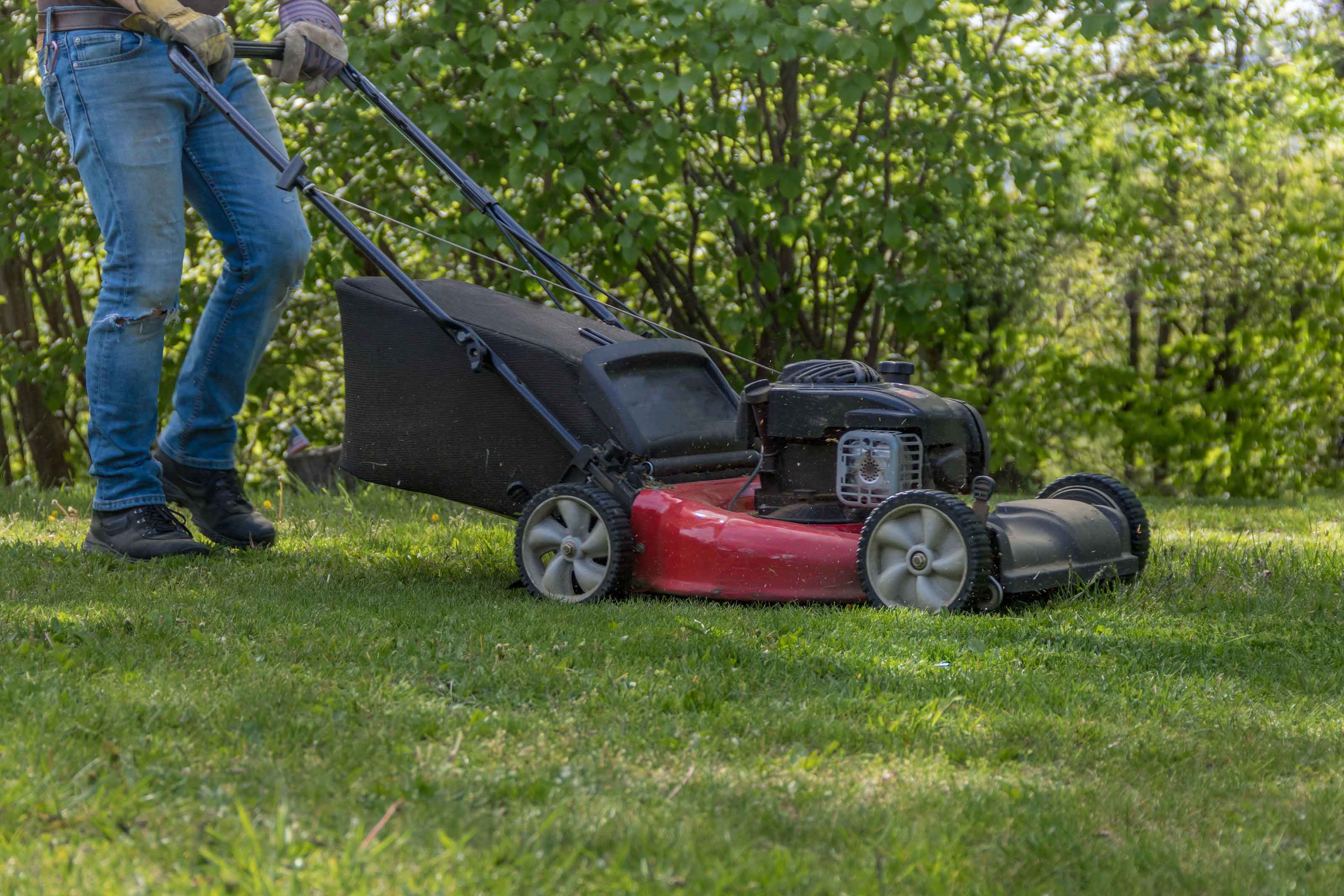
Battling with a weedy lawn? Frequent mowing is a good way to deter them. It weakens the plants and stops them from setting seed, which can eventually get rid of them altogether.
Just make sure you attach a basket to your mower, rather than leaving the clippings on the grass. The latter can spread the seeds around, escalating the problem. Once your lawn is weed-free, you can remove the basket and leave the clippings on the ground, which will act as a natural fertilizer.
If you need an update this season, take a look at our best lawn mower buying guide. And, for more advice, our tips on how to get rid of lawn weeds will come in handy.
4. Cover in boiling water
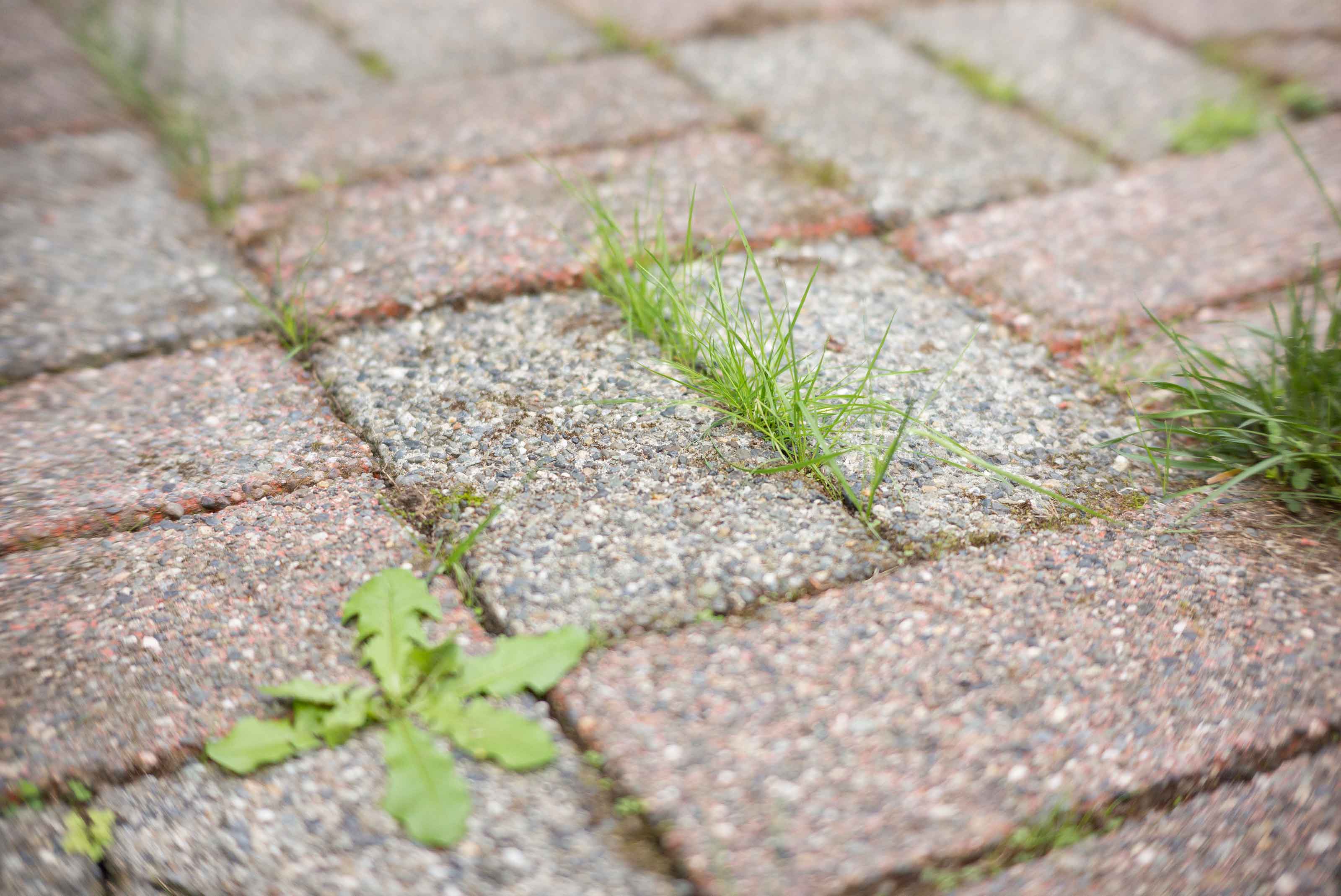
Looking for a simple solution on how to get rid of weeds? Pouring boiling water on the base of the plants causes instant shock and will not only kill the weed but also any seeds that may be dormant in the soil.
It's a brilliant solution for walkways, garden paths, and driveways, as the weeds will die within a couple of days. However, it is not recommended for use on lawns or in borders with other plants as it can cause fatal damage to these too.
5. Make a homemade weed killer with baking soda
Looking for more budget-friendly ways to eradicate weeds? Try this trick, with something that you probably already have in your cupboards.
Since baking soda is a powder, you'll need to wet the plant in order to make the powder stick. Then, sprinkle one teaspoon of baking soda over the weed's leaves and let it work its magic. This is a great method if you want to target specific weeds that have popped up amongst flowers or plants that you don't want to harm. Reapply in four to six weeks if the weeds have not disappeared.
If you're looking for ways to prevent weeds from growing in your paving, then sprinkling baking soda in the cracks can stop them from appearing in the first place. Repeat every couple of weeks.
6. Line your flower beds to stop weeds appearing
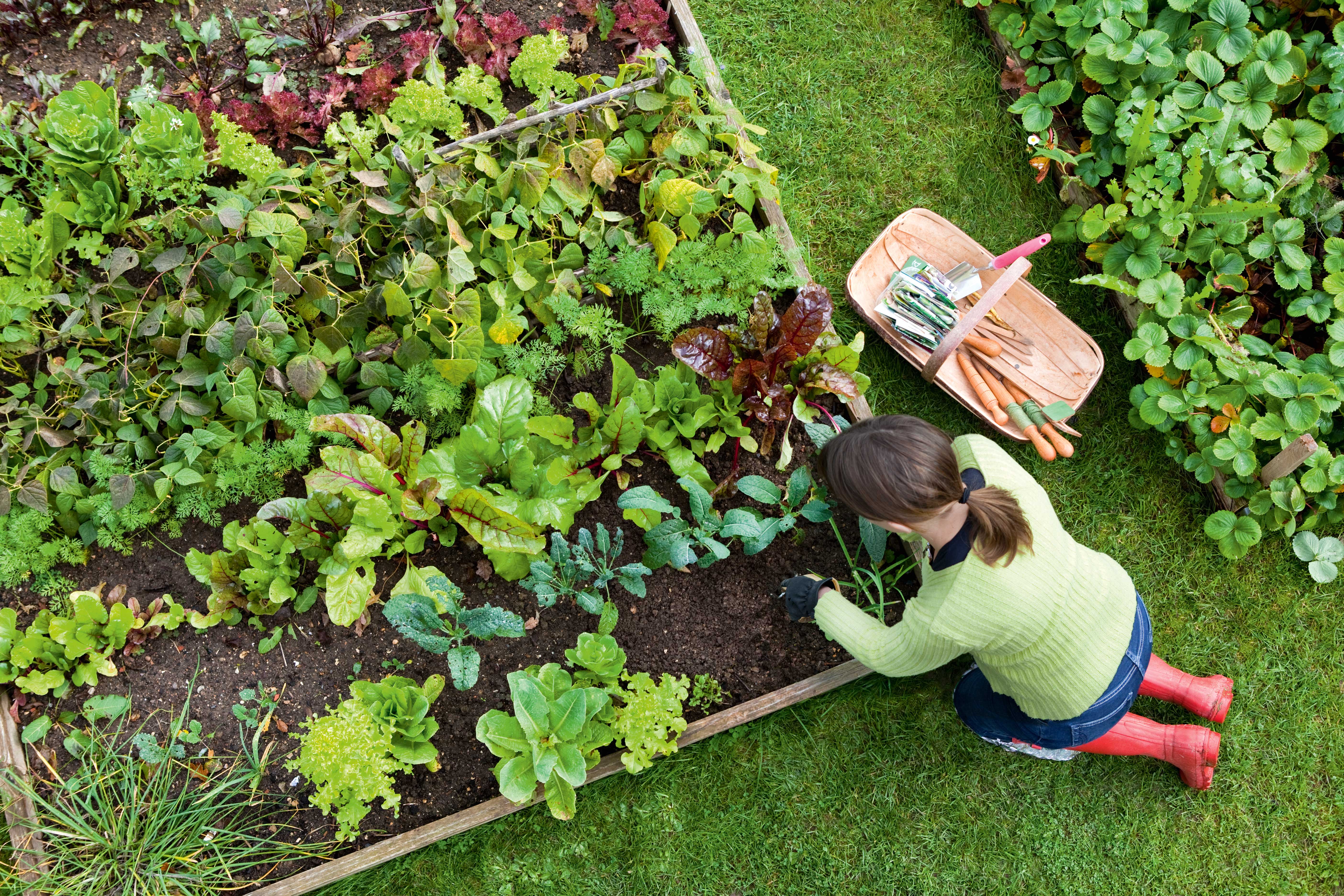
The easiest way to deal with weeds is to prevent them from cropping up in the first place. Lining your patio, driveways, or paths with a weed-proof membrane before adding gravel, slate, bark chippings, or similar will help to keep them at bay.
For your raised garden beds, garden centers and DIY stores often sell specific lining sheets (it is sometimes called landscape fabric), which will also retain moisture and reduce the need for watering. Alternatively, if you have old carpet tiles or a shower curtain, these are a great DIY solution and are a good way to recycle unwanted household items.
7. Use vinegar to kill weeds
The active ingredient in vinegar, acetic acid, is also very effective at destroying weeds.
Your standard brown fish-and-chips vinegar will go a decent way to helping with your problem. Simply pour into a spray bottle and spritz onto the desired plants.
If you want something that packs a bit more punch, there are also horticultural vinegars, which usually have a higher concentration of acetic acid and as a result are more effective. However, they also require handling with greater care as they are corrosive and can burn the skin, damage eyes, and erode the surface of your tools.
With either type, it's important to be careful not to spray the plants that are meant to be there. Vinegar is non-selective and will destroy any vegetation in its path, including your prized blooms.
8. Try an eco-friendly heat gun
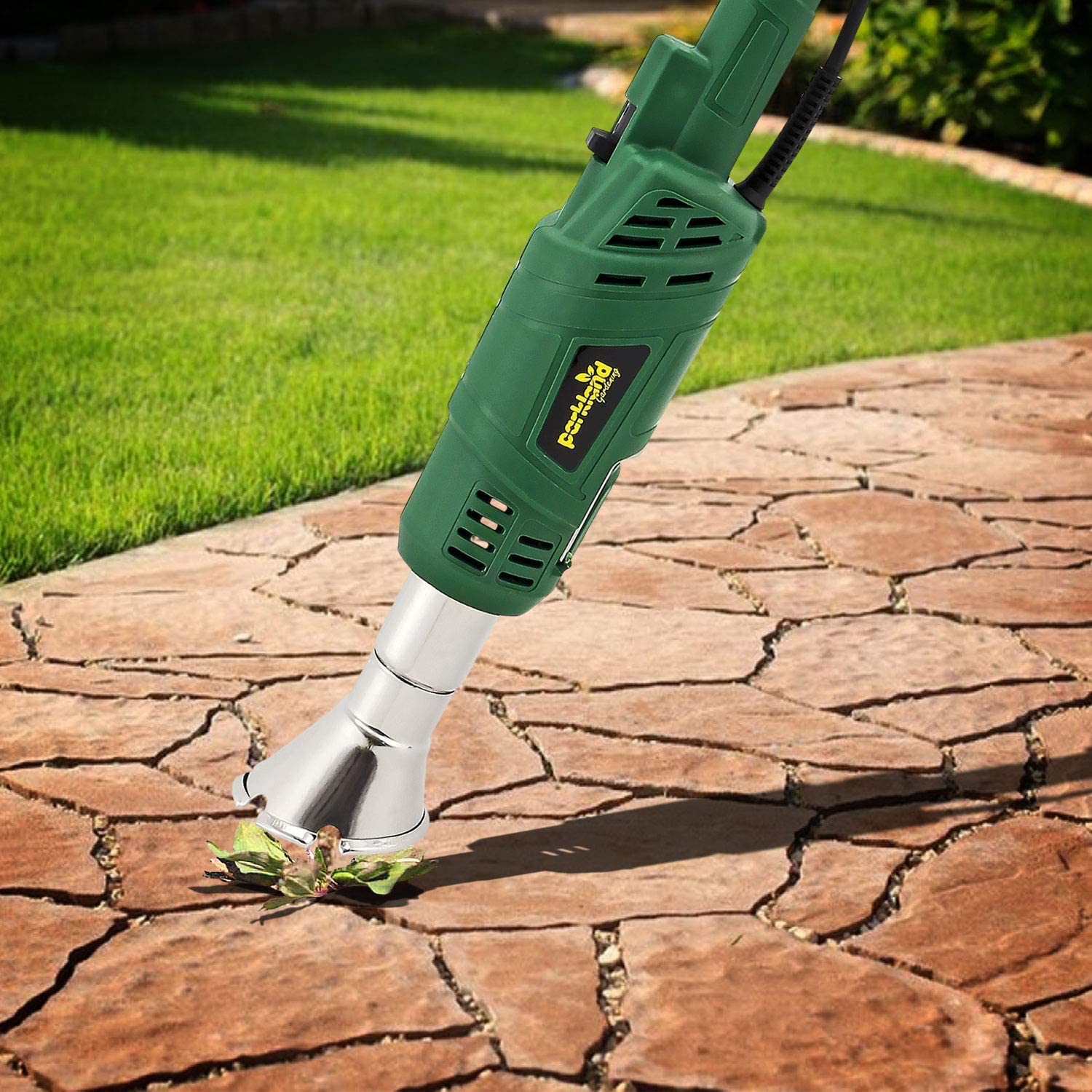
Environmentally friendly, very precise, and a lot more exciting than pulling weeds by hand – a weed burner works by surrounding the weed with an extremely high temperature which destroys its leaves.
This prevents it from photosynthesizing and subsequently kills the weed. However, the roots remain intact, so multiple treatments may be required.
9. Dispose of them properly

Whichever method you use to get rid of weeds, it's crucial that you dispose of them properly. Collect them all in a work cart, small wheelbarrow, or strong garden tub to make it easier to transport them for disposal, suggests the team at B&Q. Don't add them to your compost, they add. Instead, throw them out with your other green or general waste.
If you love a bonfire, you'll be pleased to know that most weeds can be added to the heap. However, some weeds are dangerous to burn, such as poison ivy. When set alight, it releases its toxic oil into the air. If breathed in, it can cause significant harm (which will require immediate medical attention).
It's also worth knowing that Japanese knotweed is classed as 'controlled waste' in many regions. This means it can't simply go out with the usual trash or be dumped in the local tip (unless yours has the right environmental permit). In the UK, it's also illegal to dispose of it in the wild. Professionals can be hired to take it away.
10. As a last resort, use a herbicide

Chemical herbicides are no good for wildlife garden ideas, and are certainly out if you're following an organic gardening approach. But, if you've tried absolutely everything else and are on the verge of giving up, then they can be an effective last resort.
You have two options. One is a targeted formula, usually a gel, that you apply to the leaves to destroy the weed from the top down. This is ideal if you only have a few weeds, or if you don't want to put any of your other plants at risk. Alternatively, if your problem is more widespread, then opt for a solution that is sprayed or watered onto the plant.
Read the packet very carefully, and follow the application instructions while using all safety precautions necessary, such as wearing protective clothing. Also, be careful when selecting your herbicide of choice. Some are selective (so will only affect certain types of weed), whilst others will destroy anything which crosses their path – so are no good for spraying over your flower beds. It's also a good idea to dedicate one specific watering can or sprayer for weed killer – and use it for nothing else.
Our best weed killer buying guide has our favorite picks.
11. Tackle weeds fast
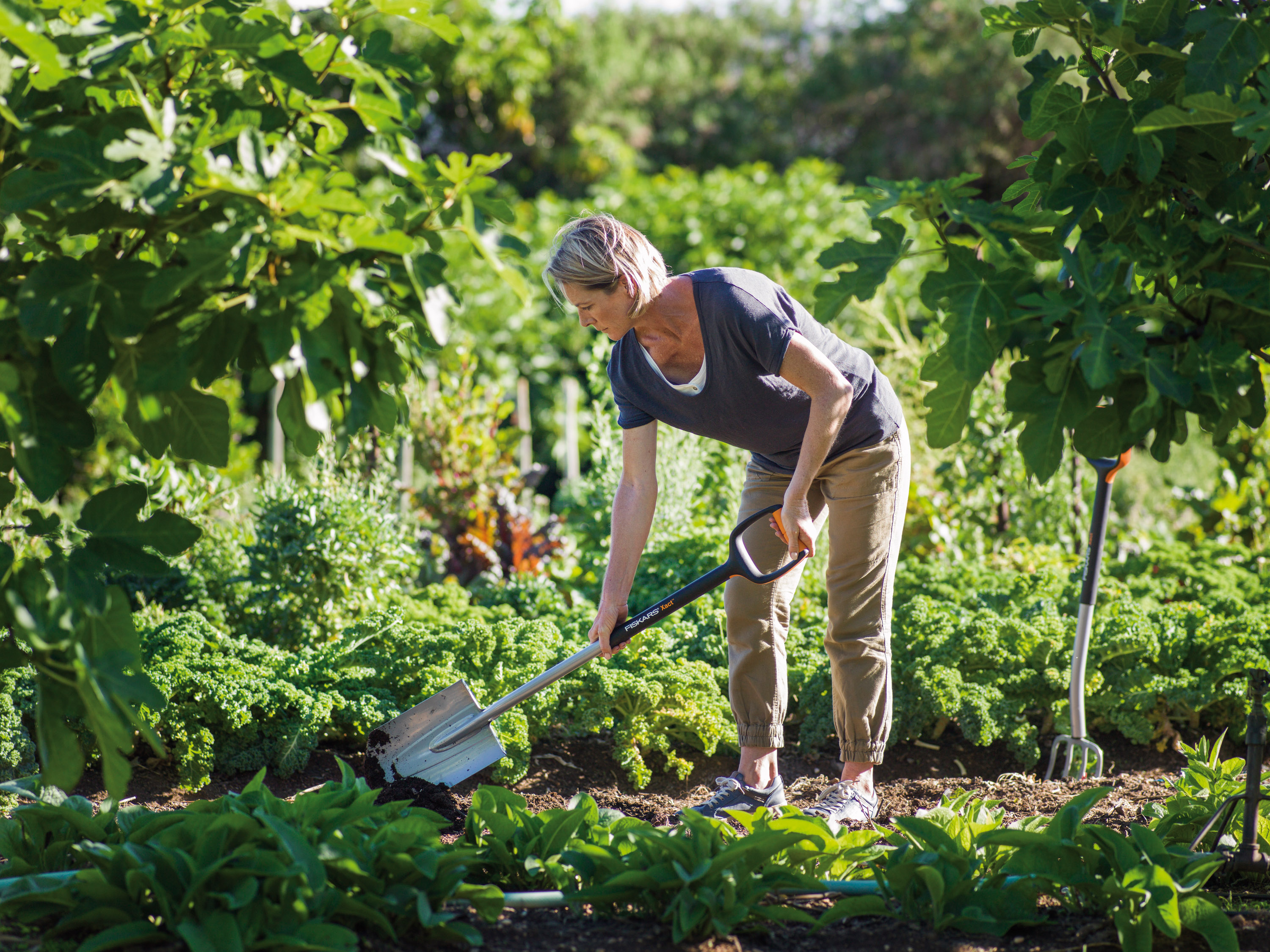
Whenever you see a small weed popping up, be sure to get rid of it quickly. What's small this week will soon be elbowing your other plants out of the way.
Be vigilant and do a regular 'sweep' of the garden, looking out in particular for invasive weeds such as nettles and dandelions. Once this type of weed takes hold they're tenacious and don't give up easily, so try to prevent them from getting established in the first place.
12. Weed little and often
Set aside a dedicated time every week to tackle weeds in the garden to make it easy to keep on top of things.
It's a known fact that weeding can be therapeutic, so take it as an opportunity to step back from your busy schedule and unwind. Not only will you be doing the garden a favor, but also yourself.
How do you get rid of nettles?
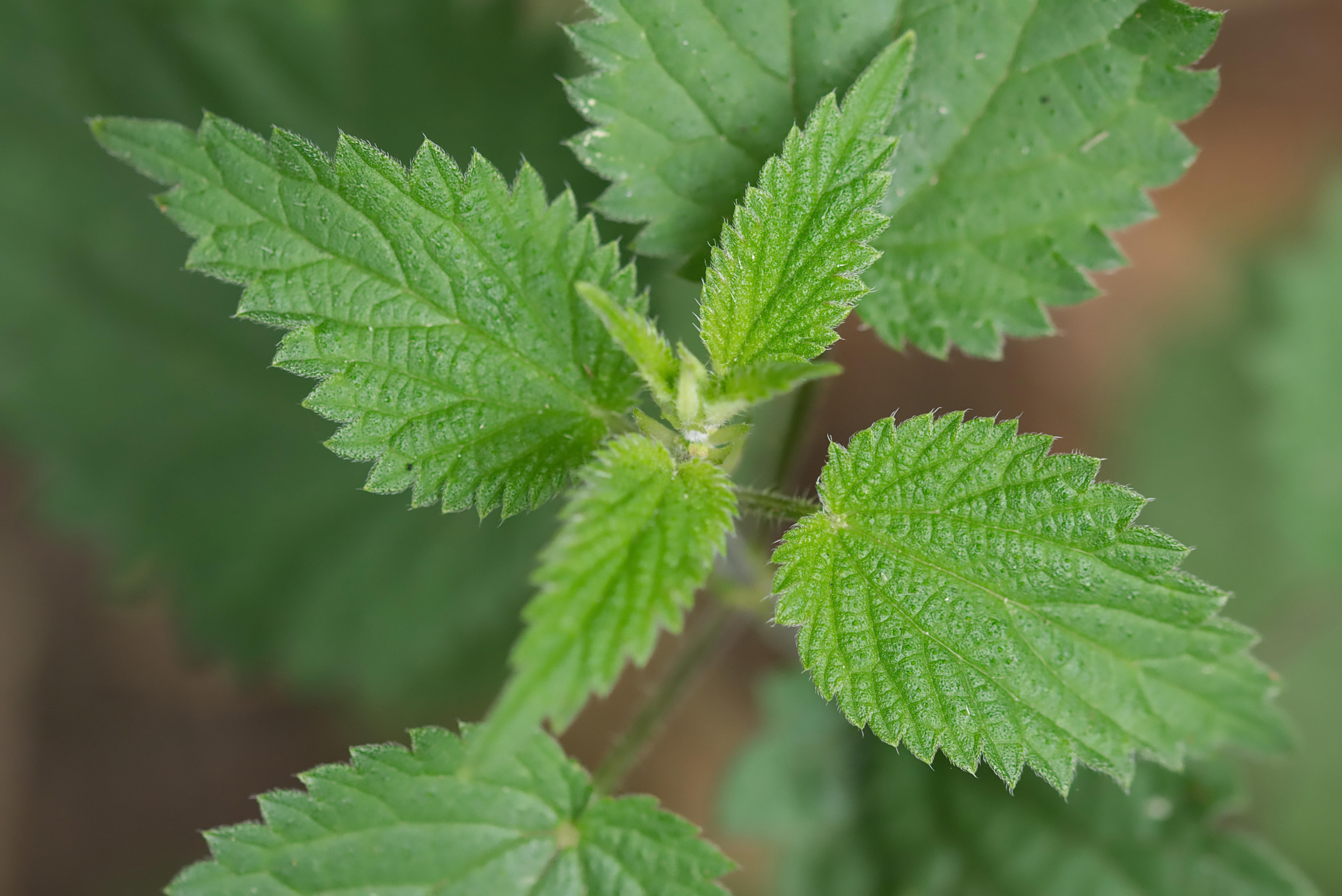
If you've been thinking about how to grow a butterfly garden, you might be interested to know that nettles are a valuable food source for these pretty creatures. However, they can swamp corners of your garden quickly, and cause a nasty sting when touched.
The RHS advises preventing the seeds from setting by cutting down plants in mid-summer, or earlier. You can also dig out isolated clumps, or those that have grown in light soils. This can be done any time of the year, they add. Nettles also cannot withstand repeated mowing.
If you want to use weed killer to tackle a neglected area that's been overtaken by nettles, opt for a glyphosate-based variety, continues the RHS. Spray over the plants in early summer, before they flower.
How do you get rid of ivy?

English ivy can be a good plant for adding greenery to walls, but it can be a nuisance if it gets out of hand.
'The best way to control ivy is to cut it to within 12in (30cm) of the base and, using a sharp knife, make a "frill girdle" of cuts in the stump,' says the Amateur Gardening experts.
Then, carefully paint the wound with a systemic herbicide. This will be taken via the ivy's sap stream to all parts of the plant, which will consequently wither and die. 'However, don't splash it on treasured plants,' warns the team.
How do you get rid of lords-and-ladies?
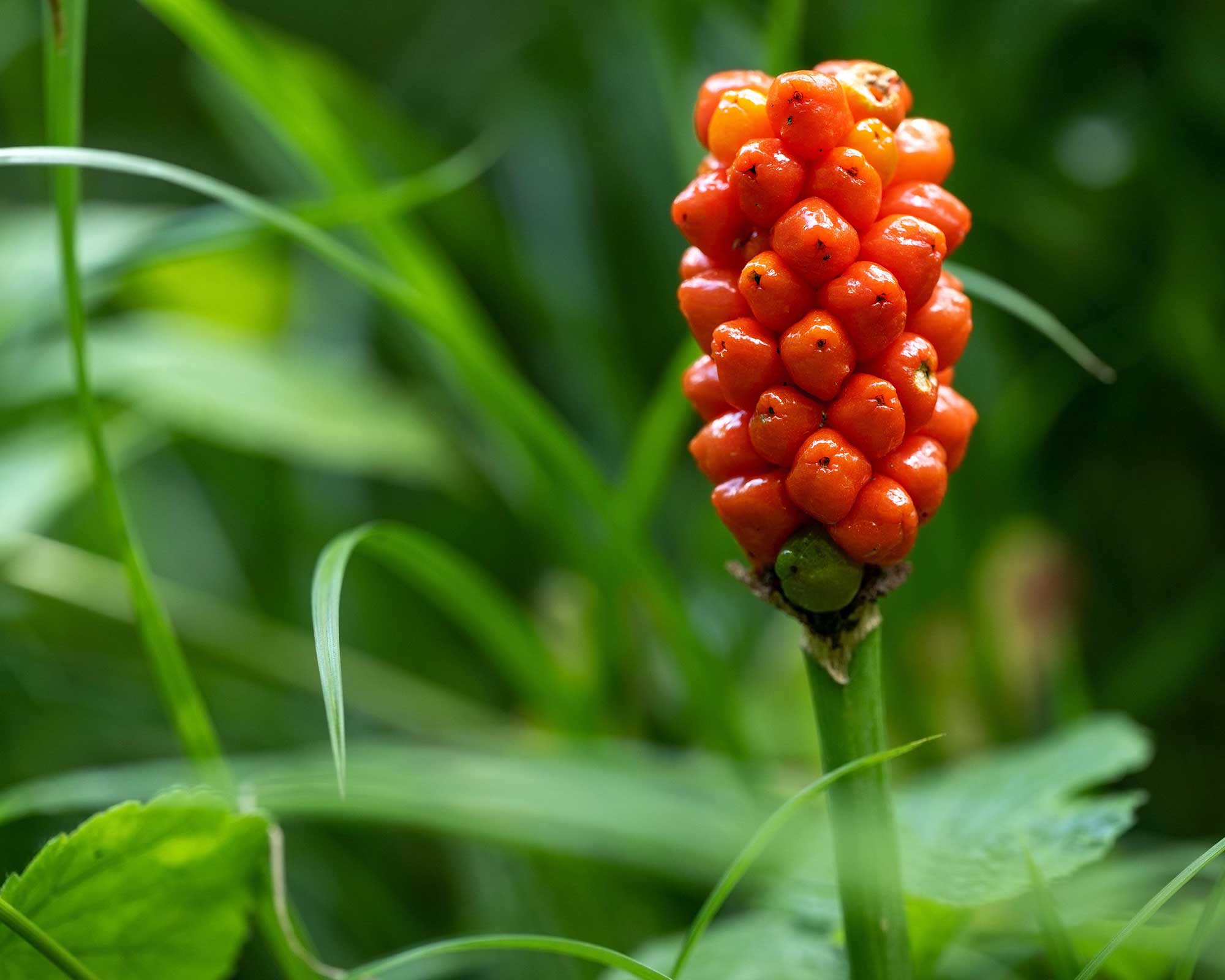
A British wildflower and tuberous perennial, lords-and-ladies or cuckoo pint is a nuisance in the garden, thriving in shady spots.
'Remove it by digging it out or by dabbing it with a systemic weed killer,' advises the Amateur Gardening experts. The herbicide will be taken into the plant, and the roots and shoots will soon die.
How do you get rid of chickweed?

Hand-weeding or carefully hoeing beds and borders can be an effective way to control chickweed, as suggests the RHS. However, aim to do this before the plants flower and their seed sets. Choose a dry day so disturbed weeds shrivel and die rather than re-rooting, they add.
The team also suggests applying weed-suppressing sheets, or bulky mulch to a depth of at least three inches, to smother new seedlings and prevent germination.
If you want to use weed killer, opt for contact herbicides containing acetic acid, fatty acids, or pelargonic acid, the RHS continues. However, be careful not to get these herbicides on your other plants as they are non-selective.
How do you get rid of comfrey?

If you've investigated how to make fertilizer at home, you'll know that comfrey has its uses. However, if it gets out of control, it can be problematic.
'Comfrey is a vigorous clump-forming perennial with an enormous root system,' says John Negus, a gardening expert from Amateur Gardening. 'It can be invasive and digging it up usually leaves behind pieces of root in the soil, which then produce new shoots.
'Constantly slicing off any green leaves that pop up, using a hoe, will eventually exhaust the root system and no more leaves will appear,' he says.
However, John says your best option is to use the weed killer glyphosate, which travels down to the roots killing the whole plant.
'Unfortunately, glyphosate kills most plants and so it is difficult to use in borders among other plants. Cover the plants that you want to keep before spraying the comfrey. There are also gel applications that you can dab onto the leaves. You may need repeated applications to get rid of it. Follow the manufacturer's instructions.'
How do you get rid of bindweed?
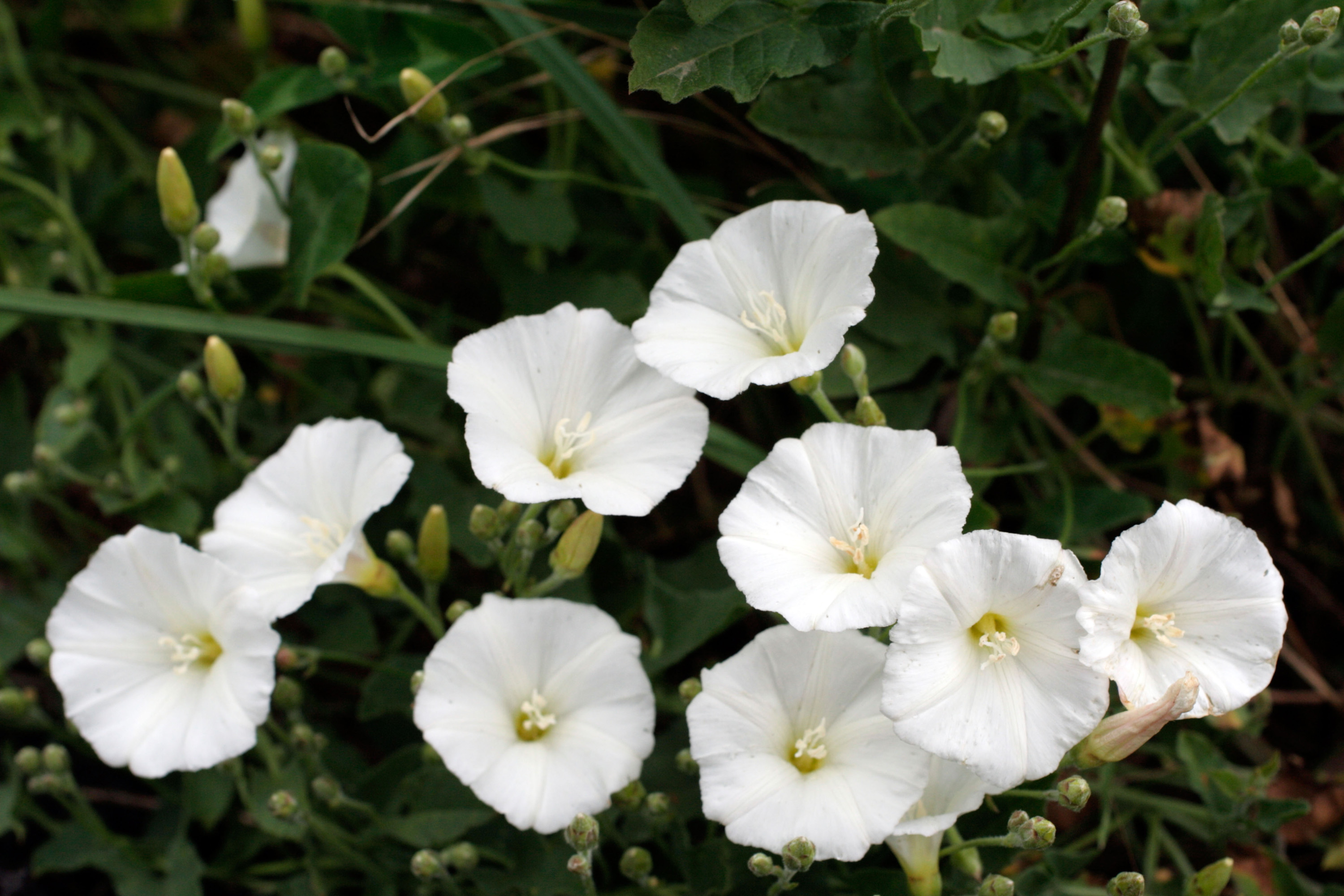
Bindweed produces thread-like vines that wrap tightly around other plants, and eventually strangle them. It's easy to spot with its trumpet-shaped flowers, but don't be tempted to leave it. Soon after the first flush of blooms is over, it will take over and ruin your flower beds.
'Bindweed is an especially clear example of the need to get in quick,' says Graham Rice for Amateur Gardening. He reckons that for every foot of twining bindweed stem above ground there's the same amount of invasive root underground. 'Keep pulling away the top growth,' Graham says, 'excavating as much root as you can.' Eventually, the roots will exhaust themselves trying to make more shoots. If you're digging downwards to try and remove the roots, go deeper than you might expect.
Getting rid of bindweed takes patience, willpower, and several attempts to pull it up, as any root left behind will sprout again. 'You have to keep at it, and that's where most of us fail,' Graham adds. Allow the shoots and leaves to develop and they'll fuel underground spread day by day.
How do you get rid of horsetail?
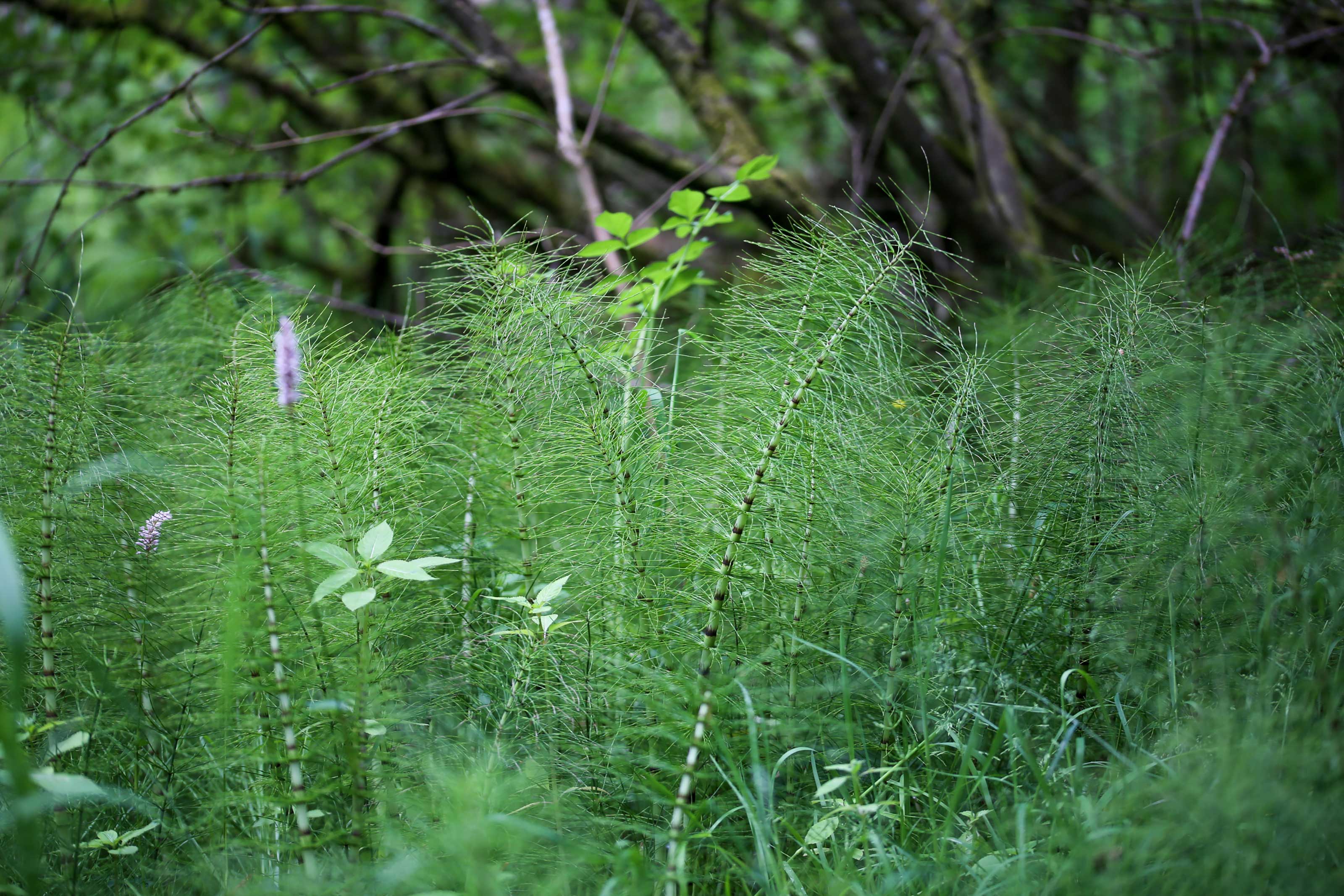
Horsetail, sometimes called mare's tail, is given its name due to the appearance of its fine foliage. If you want to know how to get rid of weeds, you should know that this one is particularly tricky to eradicate, but it can be done.
The reason why it's so difficult to remove is the depth of the roots, which can be up to a whopping 6ft long.
'The best way is to crush them to break down the herbicide-repelling silica in their stems. Do this by treading on them or hitting them with a stick,' advises the Amateur Gardening experts.
Then, apply a weed killer formulated for brambles, nettles, thistles, dock, and other deep-rooted intruders.
How do you get rid of ground elder?

Ground elder is another vigorous grower and will spread across your plot quickly when given the chance. However, its roots are only shallow, so it can be easily removed by hand. Watch out for leftover fragments though – shoots can grow even from the smallest pieces of root. You can also cover the weeds with black polythene to starve them from light, as suggests the RHS.
Alternatively, spray with the weed killer glyphosate, which travels down to the roots killing the whole plant. Don't be tempted to plant the variegated version, adds the Amateur Gardening experts – its seedlings will be plain green.
How do you get rid of Japanese knotweed?
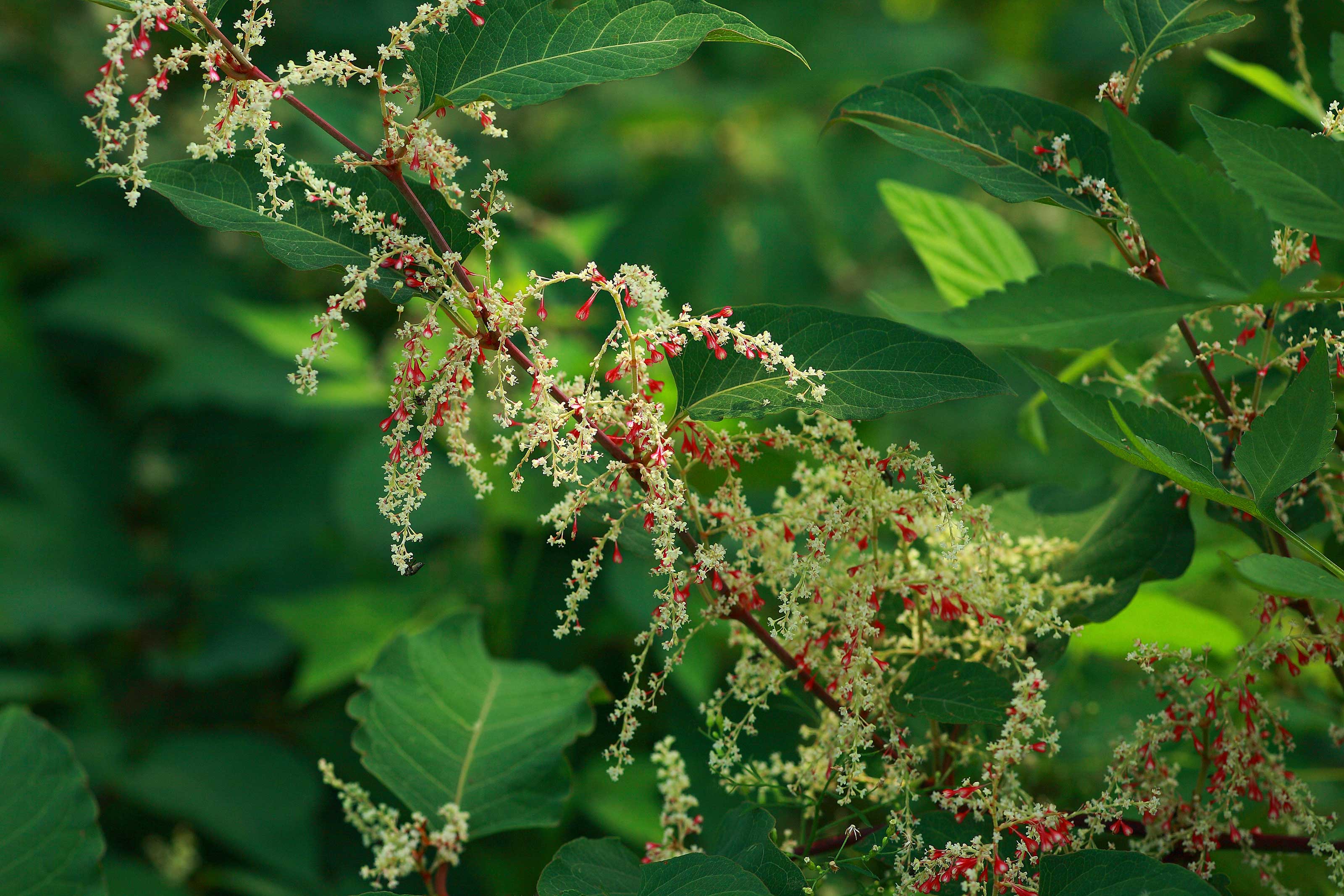
It's no secret that Japanese knotweed is one of the trickiest weeds out there. It grows incredibly fast – up to 4in (10cm) a day in summer. And, it takes little mercy on its surroundings, hurtling through pipes and structural foundations wherever it gets the chance. It's no surprise that for many regions around the world, you legally have to declare its presence if selling your property.
Trying to remove it yourself is no easy task – it can take many years to combat it with commercial weed killer. And even then, you can only take the waste to specifically licensed tips, and dumping it in the wild is a big no-no. The best way to know how to get rid of weeds of this nature, therefore, is to call in a professional.
How do you get rid of annual meadow grass?

Annual meadow grass, otherwise known as Poa annua, is a course type of grass that grows around the world – from all across the Northern Hemisphere to the most southern tip of South America.
It can spread into borders from poorly-maintained lawns and mulches of grass clippings. As the RHS explains, you can identify it in your lawn by the flowering, which can occur below the height of cut. The small, pale seed heads will give your lawn a peppered look.
To prevent it, the best thing to do is to take on a good lawn care routine. You can also try to remove larger clumps by hand. Lay fresh soil where needed and scatter in new grass seed, to fill in any gaps.
For specific tips on killing grass in flower beds, our practical guide will come in use.
How do you get rid of docks?
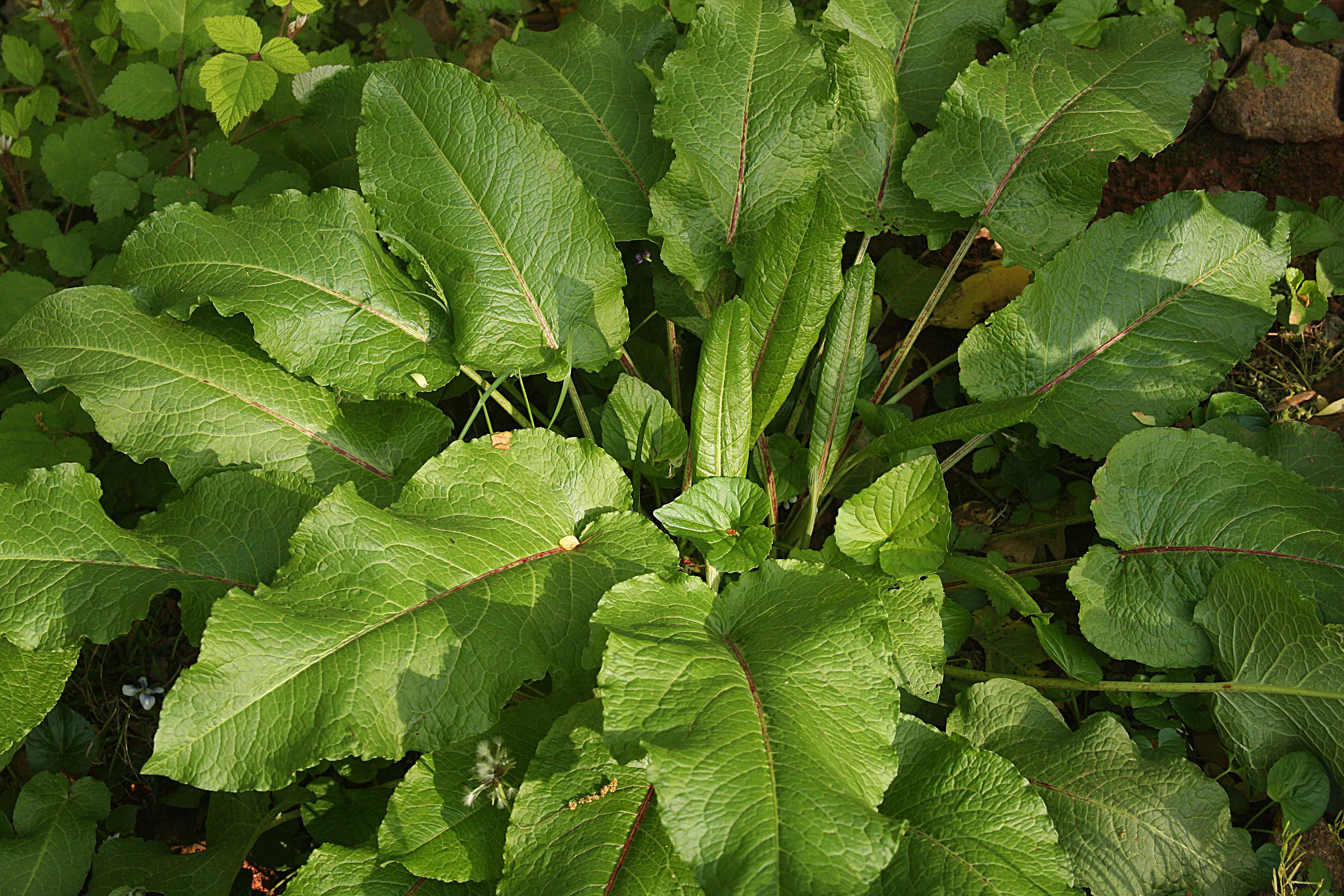
Docks have large, easily-recognizable leaves and can appear in borders and lawns in spring. There are two kinds – broad-leaved and curled (the latter have wavy-edged leaves and slightly shorter stems).
They commonly grow across the UK, and have long taproots. They produce lots of seeds, which can survive for up to 50 years in the soil. So, if you spot them, it's worth learning how to get rid of weeds like these quickly.
The best thing to do is dig them up by hand. Only the top few inches of rootstock can regenerate, so if the top 5–6in (12–15cm) is removed, the risk of regrowth is kept to a minimum. The best time to do this is in spring, as docks are most vulnerable at this time.
How do you get rid of herb robert?
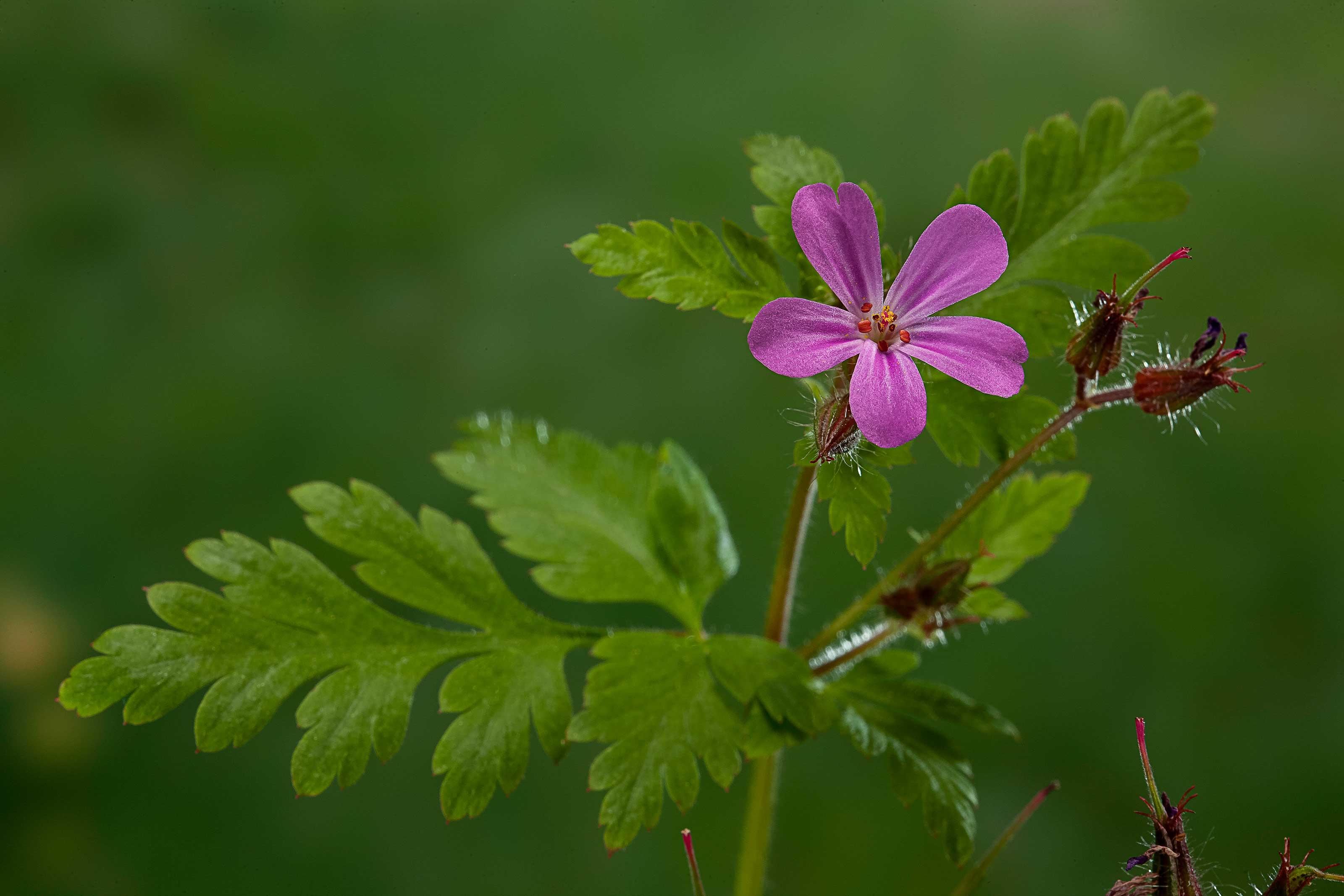
Herb robert, also known as red robin and officially named Geranium robertianum, has small, pink flowers and fragrant foliage. It's one of the prettier weeds. But, its vigorous growing habit can make it a nuisance, especially if you're a fan of orderly and modern garden ideas.
To tackle it, dig it or pull it up before it flowers or seeds – its roots are only shallow so this is typically easy to do. You can also cover it in a layer of mulch – the RHS suggests using coarse bark.
How do you get rid of couch grass?
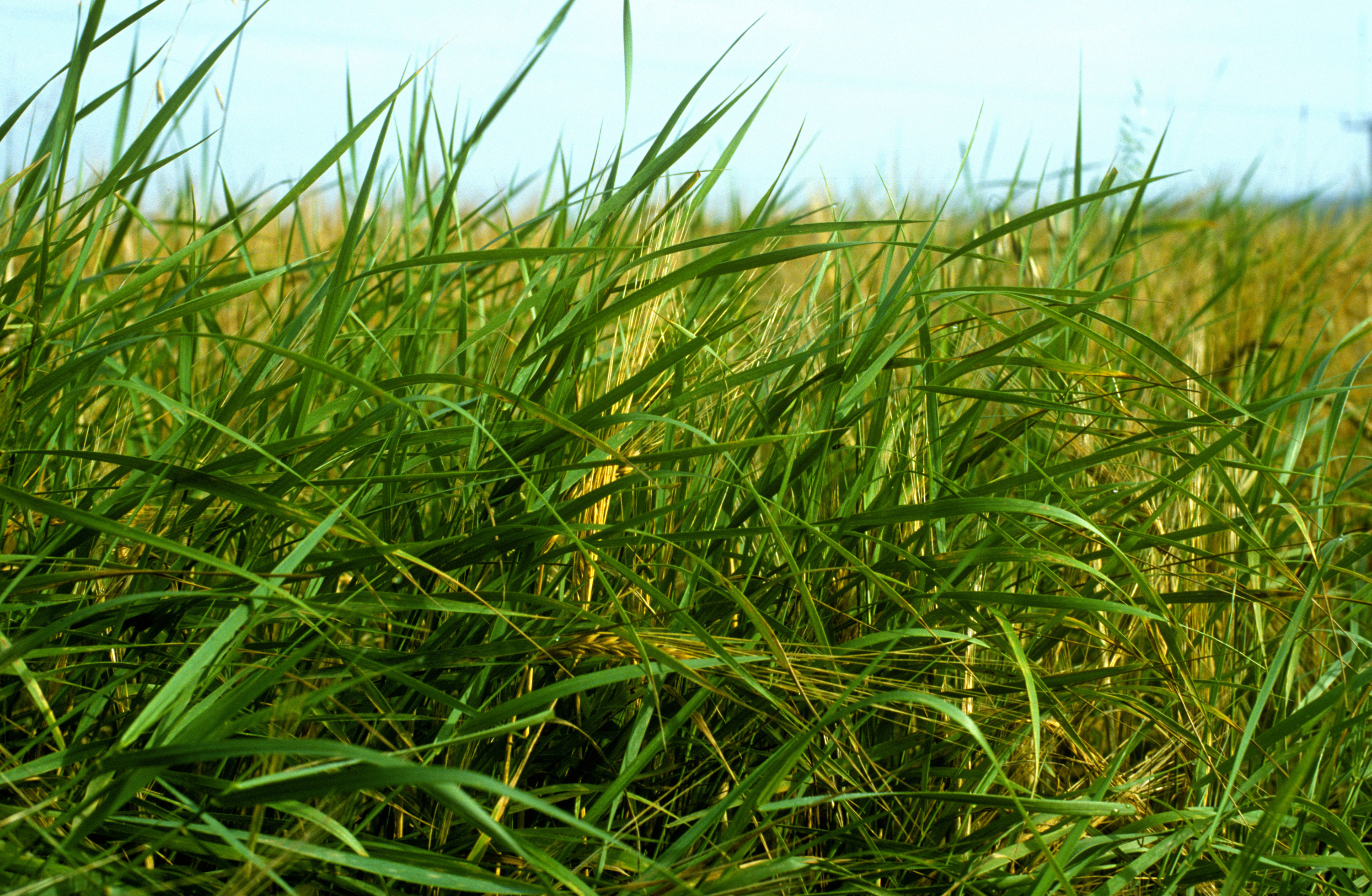
Couch grass, otherwise known as quack grass, is renowned for being a nightmare weed as it produces a vast network of underground stems and roots that travel through the soil. These then push up new shoots every 2–4in (5–10cm) along their length. Watch out for newly-emerging tufts of grass, because instead of dying at the end of each season, they keep on going through winter and beyond.
To get rid of it, be extra vigilant with pulling up shoots, because any pieces remaining will re-sprout if given the chance. To clear your plot, dig up what you can then cover the soil with thick black polythene to exclude light for a couple of seasons.
How do you get rid of dandelions?
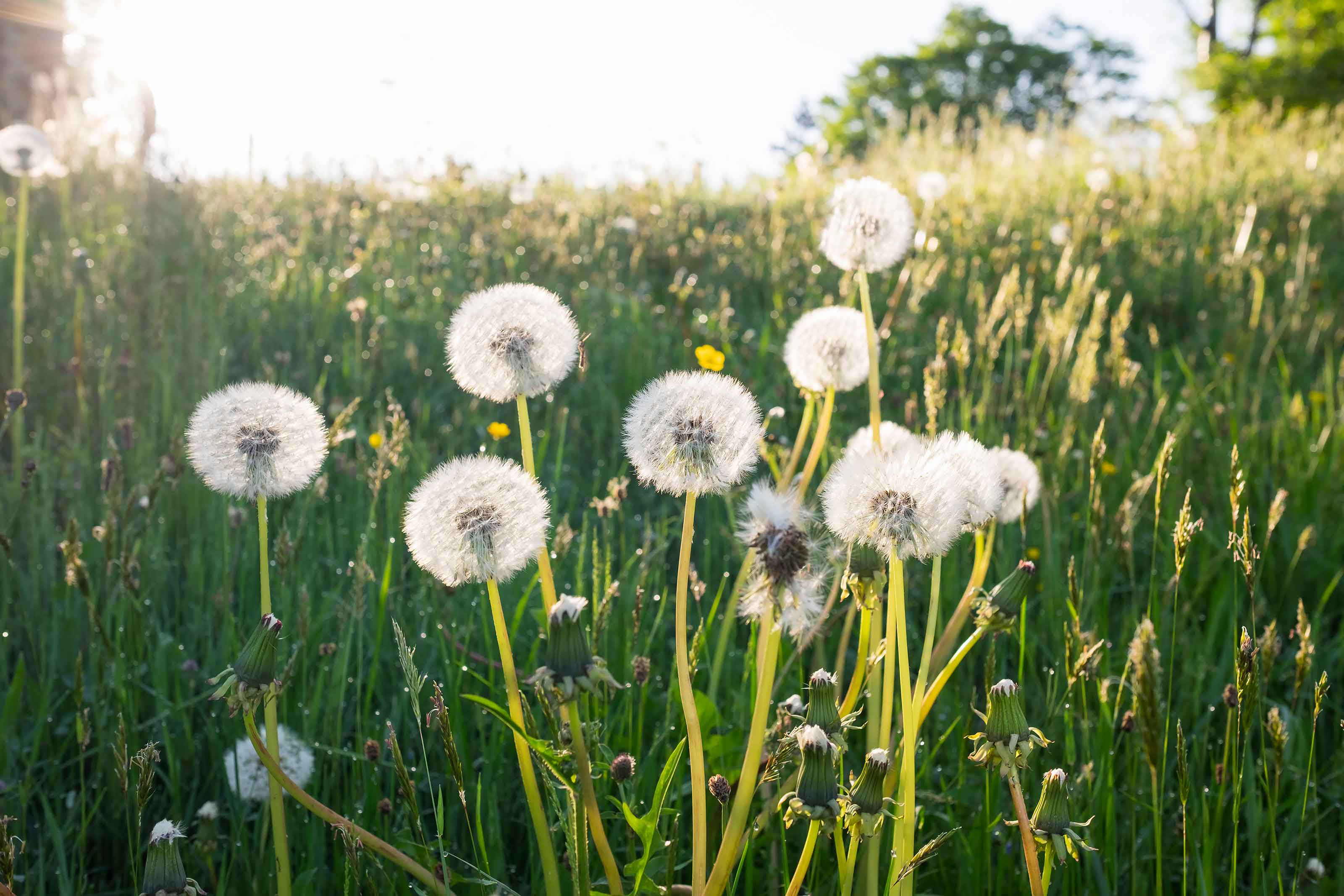
The thick taproots of the dandelion delve deep into the soil and cracks between paving slabs, making them tricky to remove. If tiny pieces of root remain after digging the soil, they'll re-sprout and take over.
To get rid of dandelions, it's best to dig them out with a garden fork, especially before the bright yellow daisy-like flowers turn into fluffy 'clocks' and release their airborne seeds.
For larger areas, a plastic sheet with mulch on top will prevent dandelions from getting a foothold. If you're looking for info on how to get rid of dandelions in a lawn, our dedicated guide has all the tips you need.
How do you get rid of cleavers?
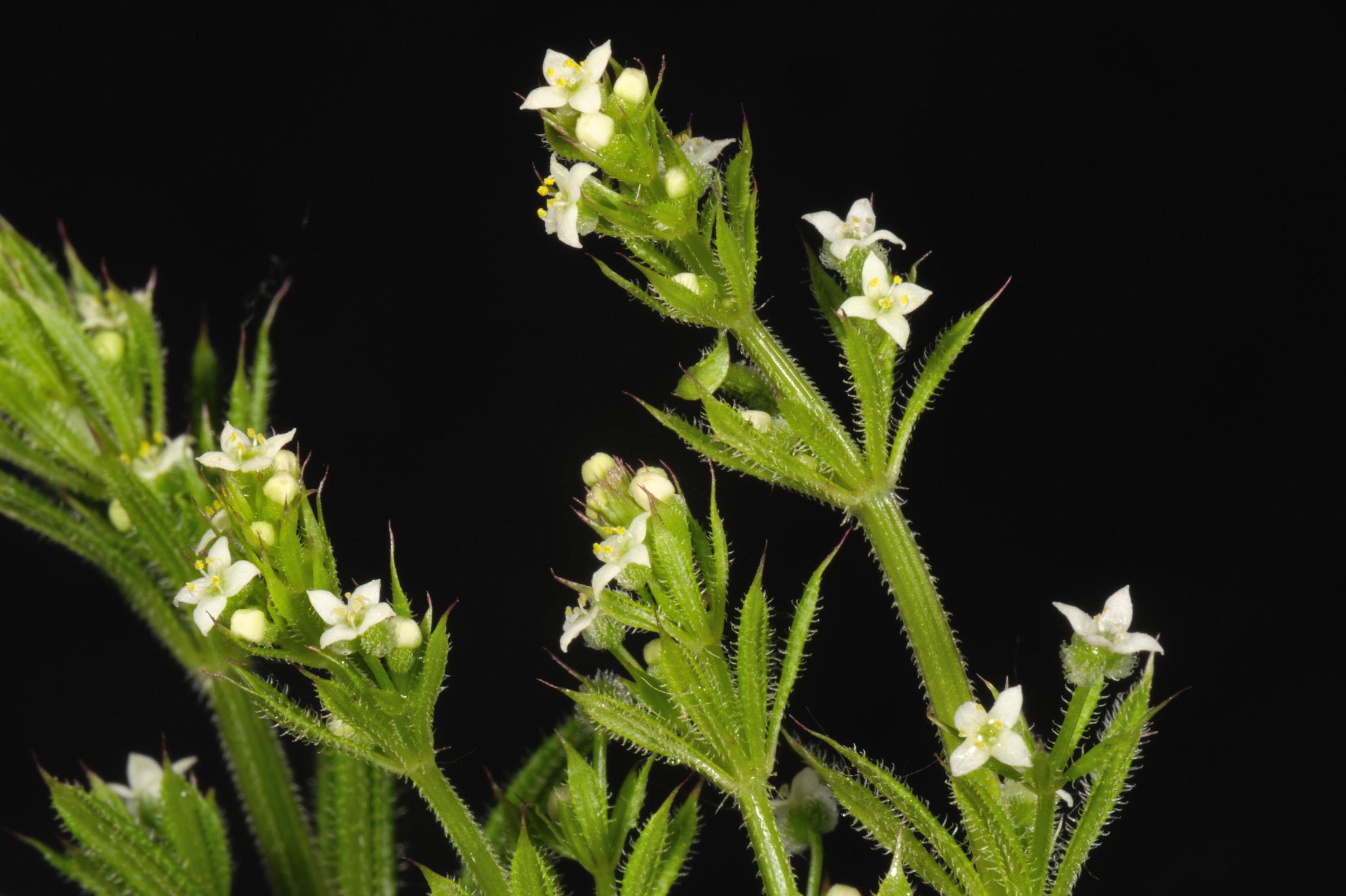
The stems and seeds of cleavers are sticky, which allows it to scramble around the garden and spread further afield by hitching on to your clothes and animal fur.
Seeds take just two months to become established plants. So, aim to lift them out as soon as the seedlings emerge in flower beds and before they flower in mid-spring.
Mulching weed-free soil with a good layer of bark chippings will help to suppress the seedlings. Both tasks make good additions to your list of spring garden jobs.
How do you get rid of hairy bittercress?
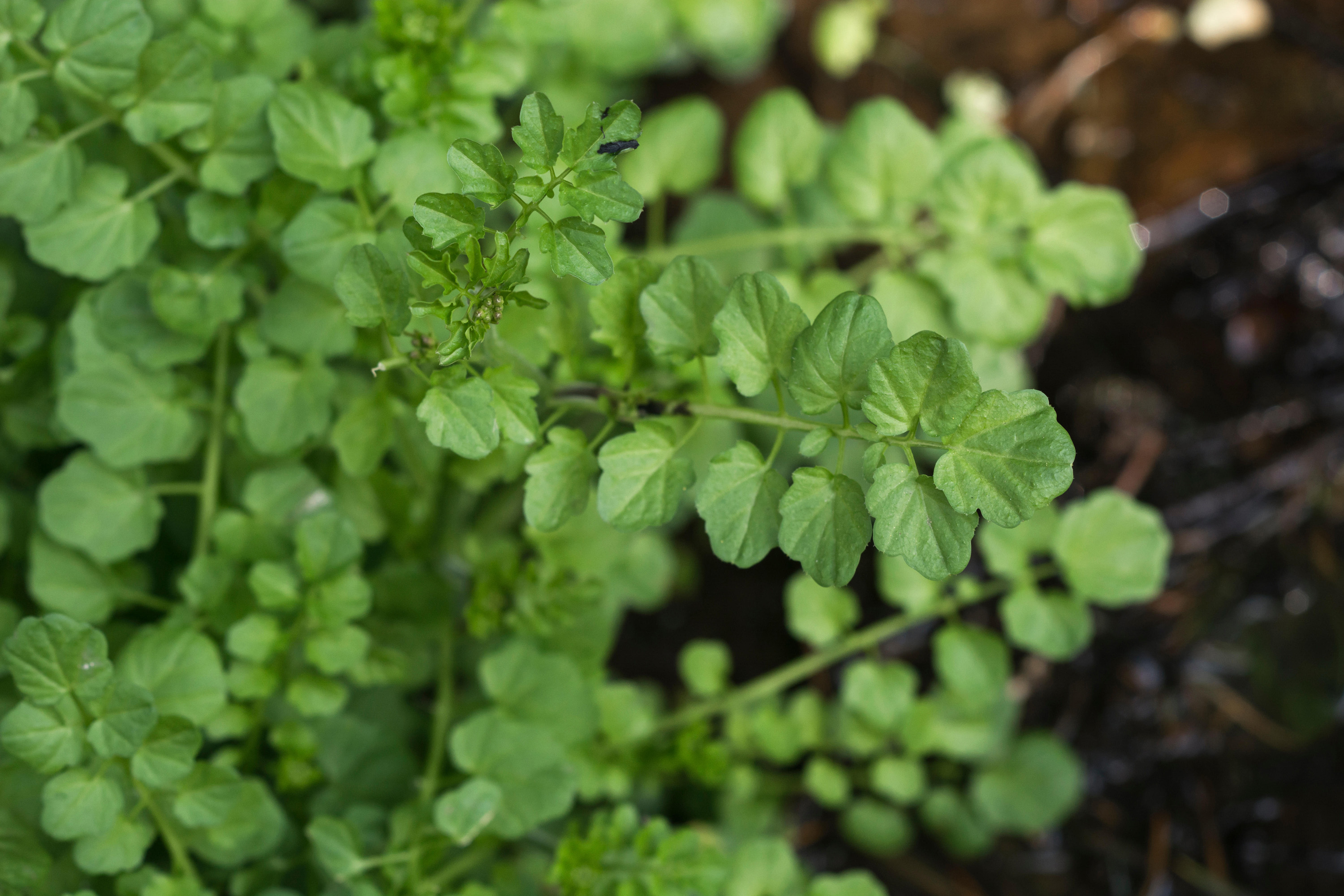
This weed is super-efficient. It's able to complete its lifecycle in less than a month and disperse thousands of seeds from its seedpods. It grows anywhere and everywhere, from bare soil to garden walls. Its seeds are often imported in potted plants bought from garden centers, which can go on to take root in the garden.
To control its spread, it's essential to pull up the young plants before they get a chance to flower and set seed. This occurs from spring to summer. Cultivating the soil will bring up new seeds, although mulching will help to prevent them from germinating.
How do you get rid of shepherd's purse?
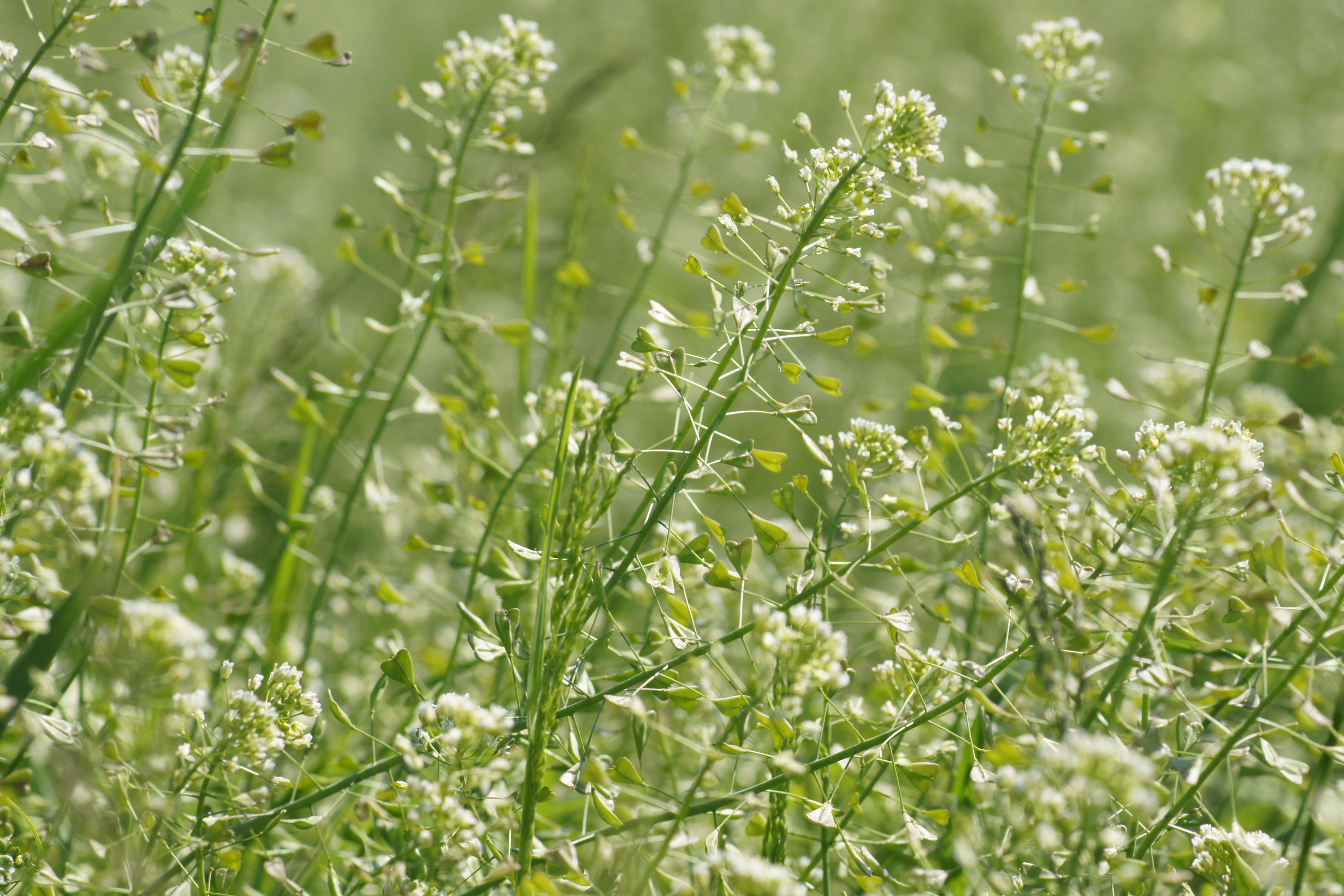
This has been used as a medicinal herb since ancient times. It's a prolific weed that's not fussy, growing in sun or in shade, and on most soil types. From a rosette of hairy leaves, it sends up flowers on tall stems, followed by pods that hold up to a dozen seeds.
Buried in the soil, seeds can remain viable for years, so aim to pull up weeds before they flower. Or, regularly hoe seedlings soon after they appear to sever rosettes from their taproots.
How do you get rid of groundsel?
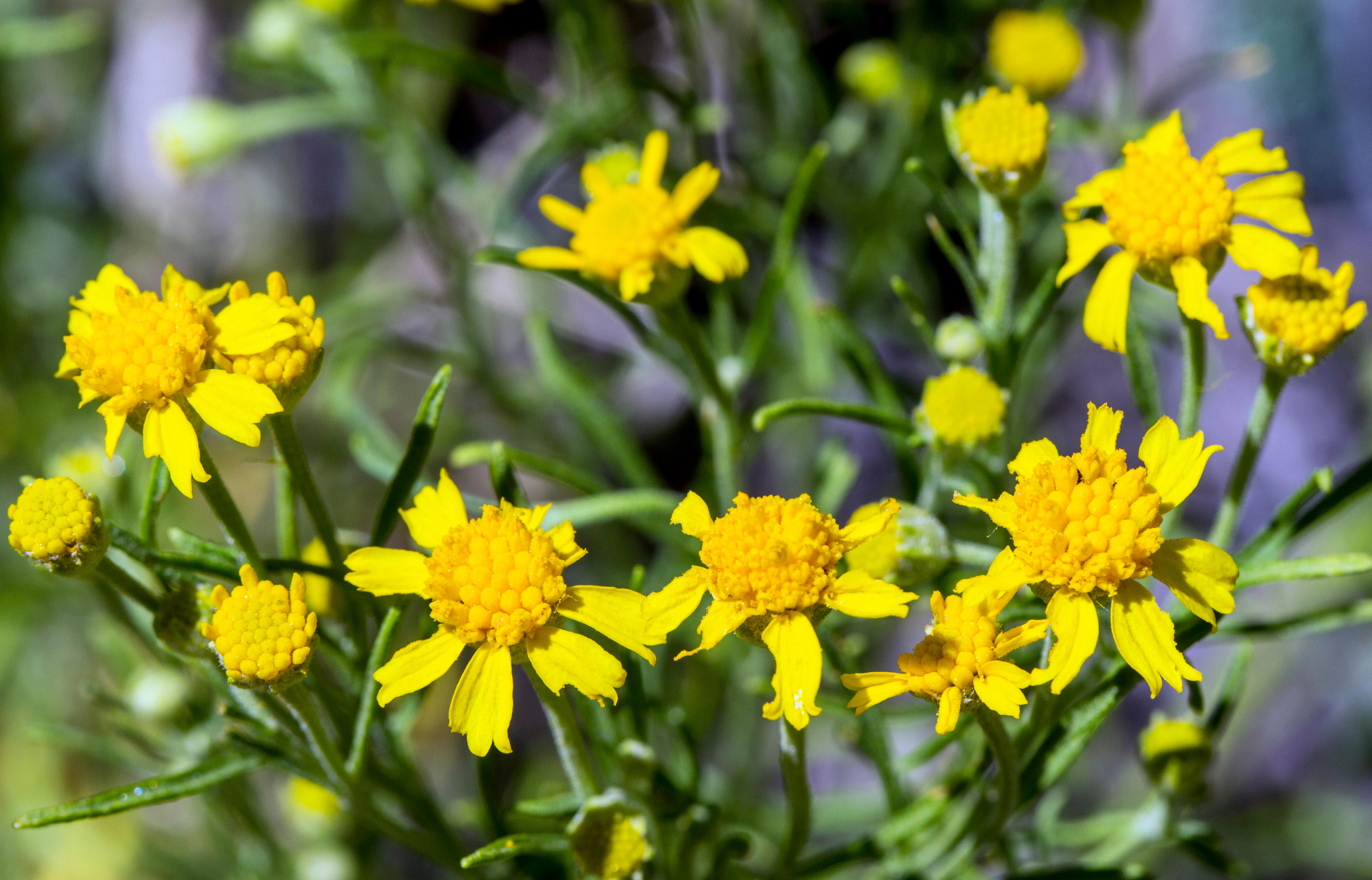
A native annual, groundsel is busy flowering and setting seed throughout the year. Even seeds that have been buried in soil for up to six months will germinate when exposed to light.
When looking to remove this weed, it's important to tease out the plants before the small yellow flowers and fluffy seed heads appear. Left to get a foothold, the leaves become host to rust fungus, which can spread to your plants.
Will saltwater kill weeds?
When wondering how to get rid of weeds, you may have come across using saltwater as a natural approach and a cheap garden idea. General table salt is the way to go (plus, it's inexpensive) and works by dehydrating the plant.
To apply, mix it with water and then spray directly onto the weed's foliage. It's a good solution for gravel or patios, but be careful in terms of flower beds, as too much salt can affect the pH balance of the soil and damage other nearby plants. For these reasons, it's not recommended to use this approach on your lawn, either.
Some people say that mixing the saltwater solution with vinegar increases the effectiveness. But again, watch out for neighboring plants as vinegar will affect whatever it comes into contact with.

When is the best time to apply weed killer?
'The best time to apply weed killer is when plants are actively growing, as in this way the chemical is quickly transported around the whole plant (including the roots) and is most effective,' advises the Amateur Gardening experts.
'Plants are actively growing when temperatures are between 53˚F/12˚C and 77˚F/25˚C,' they continue – which tends to be from mid-spring to early fall.
'There is little point spraying during cold or hot weather, as much of the chemical will not be absorbed by the plants and will therefore be wasted,' they add.
'Weed killer should also not be applied during wet or windy weather, as it can be washed onto, or drift towards, treasured plants you want to keep, and kill them off too.
'However, as with all advice, the best thing to say is to apply weed killer according to the manufacturer's instructions – products do vary slightly in their efficacy.'
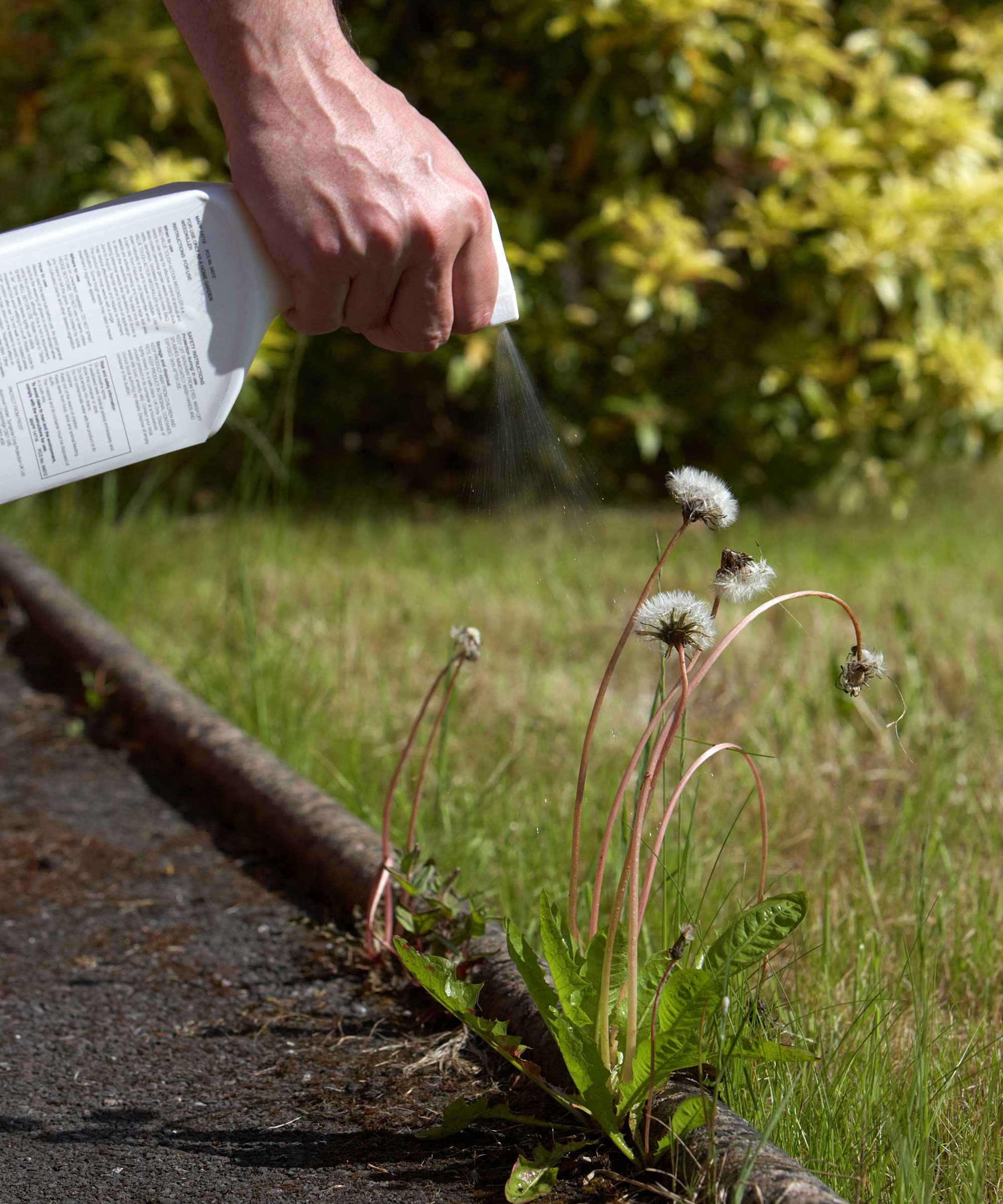
Should you remove weeds before applying more wood chips to borders?
While landscaping with wood chips looks aesthetically pleasing, it also makes a great mulch. But if you've spotted weeds growing through yours, you might be wondering if you should bother removing them before applying a fresh layer.
'It is a very good idea to deal with the weeds before adding more mulch as the bark would have to be incredibly deep to do the job itself,' says John Negus. 'If you have time and there aren't too many weeds, remove them by hand.
Alternatively, perennials such as thistles, docks, dandelions, and bindweed are probably best dealt with by spraying with a herbicide, he says.

Why is the weed killer dilution rate different between watering cans and pump sprayers?
'The dilution rate of a concentrated herbicide is governed by droplet size,' explains John.
'It is larger if the liquid is administered with a watering can than with a pump sprayer. The latter method of applying a weed killer, in which coverage is greater, is more effective than using a watering can.'

The garden was always a big part of Holly's life growing up, as was the surrounding New Forest where she lived. Her appreciation for the great outdoors has only grown since then. She's been an allotment keeper, a professional gardener, and a botanical illustrator – plants are her passion.



